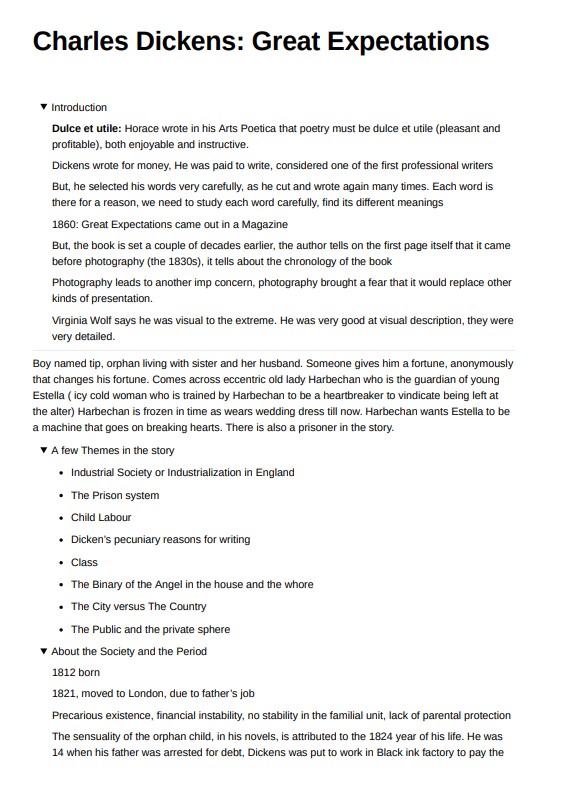Great Expectations by Charles Dickens – English Literature Notes (Grade A)
Summary:
The Great Expectations by Charles Dickens note summarises Charles Dickens’s Great Expectations in English Literature. These notes can be used for assignments, exam preparation, and class tests. The notes cover all the themes in the book, along with important incidents. Additionally, important questions are provided to prepare for exams and guidance on answering them effectively.
Excerpt:
Great Expectations by Charles Dickens – English Literature Notes
Charles Dickens: Great Expectations
Introduction
Dulce et utile: Horace wrote in his Arts Poetica that poetry must be dulce et utile (pleasant and profitable), both enjoyable and instructive.
Dickens wrote for money. He was paid to write and considered one of the first professional writers.
But, he carefully selected his words and cut and wrote many times again. Each word is there for a reason. We need to study each word carefully and find its different meanings
1860: Great Expectations came out in a Magazine
But, the book is set a couple of decades earlier. The author says on the first page itself that it came
before photography (the 1830s); it tells about the chronology of the book
Photography leads to another imp concern. Photography brought a fear that it would replace other
kinds of presentation.
Virginia Wolf says he was visual to the extreme. He was very good at visual description; they were very detailed.
A boy named Tip is an orphan living with his sister and her husband. Someone gives him a fortune anonymously that changes his fortune. Comes across eccentric old lady Harbechan, the guardian of young Estella (an icy cold woman who Harbechan trains to be a heartbreaker to vindicate being left at the alter) Harbechan is frozen in time and wears a wedding dress till now. Harbechan wants Estella to be a machine that goes on breaking hearts. There is also a prisoner in the story.


Reviews